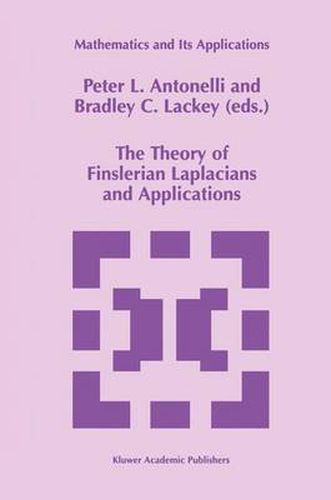Readings Newsletter
Become a Readings Member to make your shopping experience even easier.
Sign in or sign up for free!
You’re not far away from qualifying for FREE standard shipping within Australia
You’ve qualified for FREE standard shipping within Australia
The cart is loading…






This title is printed to order. This book may have been self-published. If so, we cannot guarantee the quality of the content. In the main most books will have gone through the editing process however some may not. We therefore suggest that you be aware of this before ordering this book. If in doubt check either the author or publisher’s details as we are unable to accept any returns unless they are faulty. Please contact us if you have any questions.
Finslerian Laplacians have arisen from the demands of modelling the modern world. However, the roots of the Laplacian concept can be traced back to the 16th century. Its phylogeny and history are presented in the Prologue of this volume. The text proper begins with a brief introduction to stochastically derived Finslerian Laplacians, facilitated by applications in ecology, epidemiology and evolutionary biology. The mathematical ideas are then fully presented in section II, with generalizations to Lagrange geometry following in section III. With section IV, the focus abruptly shifts to the local mean-value approach to Finslerian Laplacians and a Hodge-de Rham theory is developed for the representation on real cohomology classes by harmonic forms on the base manifold. Similar results are proved in sections II and IV, each from different perspectives. Modern topics treated include nonlinear Laplacians, Bochner and Lichnerowicz vanishing theorems, Weitzenbock formulas, and Finslerian spinors and Dirac operators. The tools developed in this book should find uses in several areas of physics and engineering, but especially in the mechanics of inhomogeneous media, e.g. Cofferat continua. This text should be of use to workers in stochastic processes, differential geometry, nonlinear analysis, epidemiology, ecology and evolution, as well as physics of the solid state and continua.
$9.00 standard shipping within Australia
FREE standard shipping within Australia for orders over $100.00
Express & International shipping calculated at checkout
This title is printed to order. This book may have been self-published. If so, we cannot guarantee the quality of the content. In the main most books will have gone through the editing process however some may not. We therefore suggest that you be aware of this before ordering this book. If in doubt check either the author or publisher’s details as we are unable to accept any returns unless they are faulty. Please contact us if you have any questions.
Finslerian Laplacians have arisen from the demands of modelling the modern world. However, the roots of the Laplacian concept can be traced back to the 16th century. Its phylogeny and history are presented in the Prologue of this volume. The text proper begins with a brief introduction to stochastically derived Finslerian Laplacians, facilitated by applications in ecology, epidemiology and evolutionary biology. The mathematical ideas are then fully presented in section II, with generalizations to Lagrange geometry following in section III. With section IV, the focus abruptly shifts to the local mean-value approach to Finslerian Laplacians and a Hodge-de Rham theory is developed for the representation on real cohomology classes by harmonic forms on the base manifold. Similar results are proved in sections II and IV, each from different perspectives. Modern topics treated include nonlinear Laplacians, Bochner and Lichnerowicz vanishing theorems, Weitzenbock formulas, and Finslerian spinors and Dirac operators. The tools developed in this book should find uses in several areas of physics and engineering, but especially in the mechanics of inhomogeneous media, e.g. Cofferat continua. This text should be of use to workers in stochastic processes, differential geometry, nonlinear analysis, epidemiology, ecology and evolution, as well as physics of the solid state and continua.